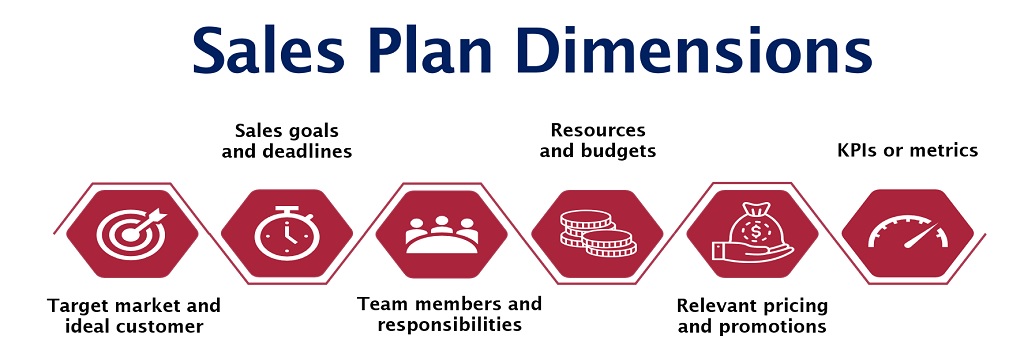xP&A is more than an attempt to ‘fix’ the planning process. It is a complete transformation...
 If your organisation is typical, you spend too many hours in annual sales planning meetings – discussing spreadsheets, crunching numbers, prioritising line items, predicting opportunities, and budgeting for next year’s expenses. When you’re finished, the value is questionable. Sure, you’ve developed a plan, but everyone knows something always happens to upend it.
If your organisation is typical, you spend too many hours in annual sales planning meetings – discussing spreadsheets, crunching numbers, prioritising line items, predicting opportunities, and budgeting for next year’s expenses. When you’re finished, the value is questionable. Sure, you’ve developed a plan, but everyone knows something always happens to upend it.
Either you aren’t fast enough to shift to the latest demand, production can’t keep up, staffing schedules are lacking, or lead times see products arrive too little or too late to have the desired impact.
Your team is savvy and knows there is a better way to plan. Today, with Extended Planning & Analysis (xP&A) technologies and processes, we can optimise the right product at the right price for the right customer – driving profitability, productivity, and flexibility.
What’s a Sales Plan?
Generally, your sales strategy aligns with your target market, customer profile, and market positioning to identify and solve customer pain points with your products/services.
Sales plans are typically driven by strategic principles based on a company’s competitive advantages, aiming to acquire new customers and grow existing ones. This is crucial to filling your sales pipeline and closing deals quickly and predictably.
Typically, the following elements are included in tying strategies to tactics, each owned by a separate function:
- Sales forecasts by SKU, customer, region, and line
- Production lead times
- Staffing requirements
- Scenario and what-if analysis and risk factoring
Fortunately, xP&A goes beyond traditional sales planning, tying these elements together and providing solutions for variable compensation plans, quota and territory plans, and optimisation through profitability analysis.
The sales plan, therefore, becomes a living – rather than static – document outlining your sales plan and defining the specific actions you’ll take. This enhanced roadmap provides directions for where to go and what you’ll achieve in a specific month, quarter, or year.
xP&A (Extended Planning and Analysis) moves beyond the finance function to align HR, sales, supply chain, and marketing to the organisation’s sales plan to continually inform, assess, shift, and win by making the best decisions with real-time insights.
Sales Plan Dimensions
Figure 1 below illustrates how to create a dynamic and integrated xP&A-enhanced sales plan.

Figure 1
- Target market and ideal customer
- Sales goals and deadlines
- Team members and responsibilities
- Resources and budget
- Relevant pricing and promotions
- Key performance indicators (KPIs) or metrics

Figure 2
Your strategic sales plan is only as robust as the preparation, teamwork, evaluation, and insights that feed into it. As we see in Figure 2, and as explained below, there are generally five steps to a winning sales plan:
1. Define Your Sales Goals
What do you want to achieve with your sales team? Whether you want to increase sales or launch a new product or service, it’s vital to be as specific as possible in defining goals that can be measured against your progress.
xP&A enables decision-makers to understand capabilities and resources, allowing them to set realistic yet challenging sales goals.
2. Create Objectives and Action Items for Each Goal
Once you have defined your sales goals, you must create objectives and action items that will help you achieve these goals. What steps do you need to take? Who needs to be involved? What resources are required?
3. Communicate
Once decision-makers have defined the sales goals and objectives, they must then communicate the company’s objectives, high-level tactics, target audience, and potential obstacles. They must also define who is responsible for achieving these outcomes. xP&A enhances communication by having one “real” number for everything.
4. Assign Responsibility and Deadlines Action Items
Once you have created your objectives and action items, it’s important to assign responsibility for each one. It ensures that each task is completed on time and that everyone knows who is responsible for what.
Setting deadlines for each action item is crucial to keeping your sales plan on track. This will guarantee that each task is given a sense of urgency and that you are progressing towards your sales goals.
For each goal, you can assign responsibility and increase accountability by defining who must do what and by when, using an integrated tool, letting each person/team define the how for themselves to arrive at the best solution possible.
This way, xP&A helps teams align, execute, change and adapt to achieve the sales plan targets.
5. Review and Revise Your Sales Plan Regularly
As the sales landscape changes, it’s essential to regularly review and revise your sales plan to remain relevant. Even the best sales plan will need regular revising. Changes to your quota, product line, existing customer base, and industry – even economic ups and downs – all necessitate aligned flexibility to get back on track and seize opportunities. xP&A reduces the ambiguity of what changes are needed, when, where, and by whom.
For example, suppose a customer has to cancel an order at the last minute. In that case, the production planners can adjust the input quantity, leading to updated figures on how much raw material and labour to schedule for the production week.
Conclusion
By harnessing the power of xP&A and following these steps, you can create a sales plan that is both dynamic and integrated, giving your organisation the best chance to achieve your sales goals and grow your business.
This article was first published on the SAP Blog.
Subscribe to
FP&A Trends Digest

We will regularly update you on the latest trends and developments in FP&A. Take the opportunity to have articles written by finance thought leaders delivered directly to your inbox; watch compelling webinars; connect with like-minded professionals; and become a part of our global community.





